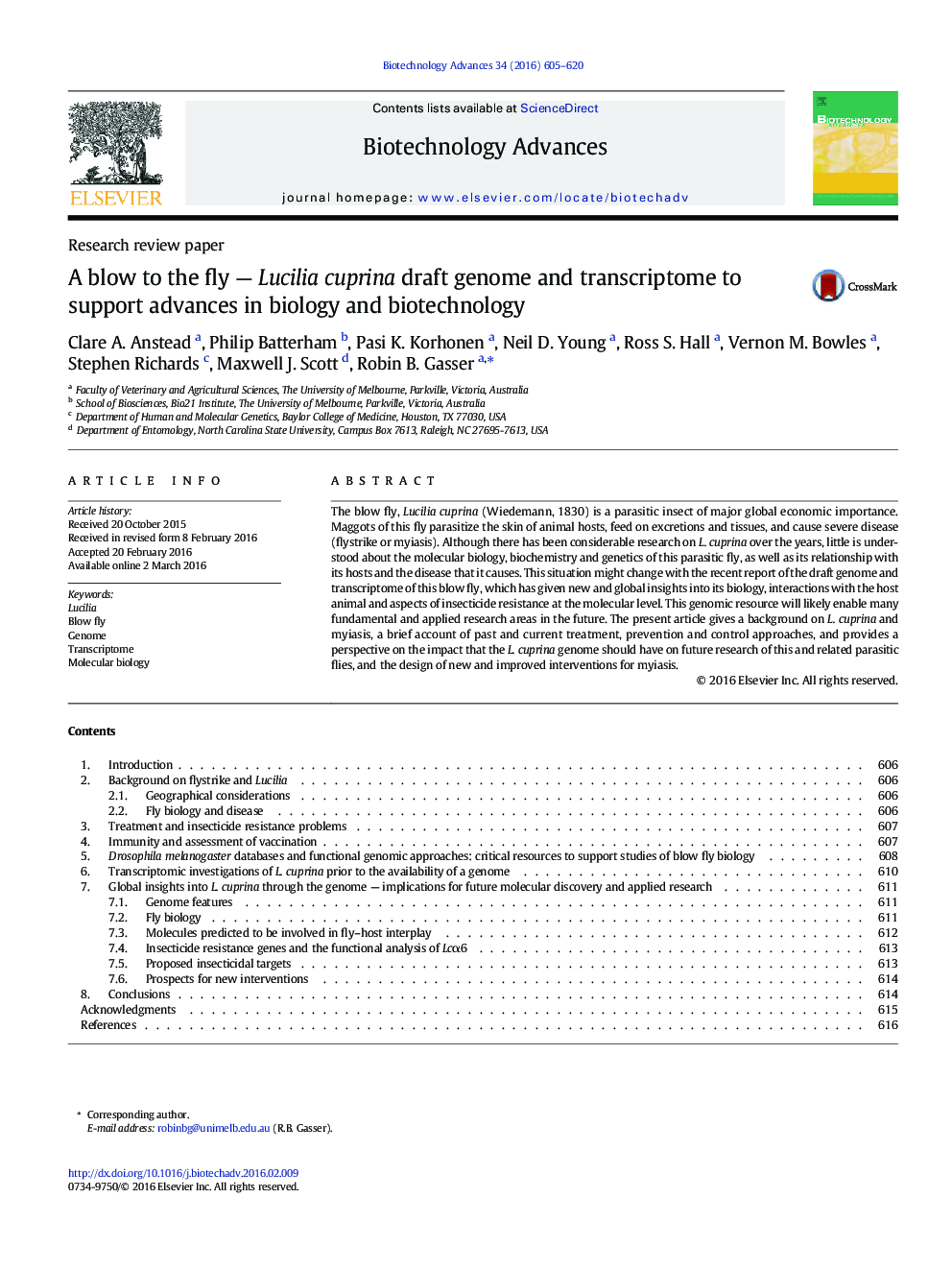| Article ID | Journal | Published Year | Pages | File Type |
|---|---|---|---|---|
| 6451211 | Biotechnology Advances | 2016 | 16 Pages |
The blow fly, Lucilia cuprina (Wiedemann, 1830) is a parasitic insect of major global economic importance. Maggots of this fly parasitize the skin of animal hosts, feed on excretions and tissues, and cause severe disease (flystrike or myiasis). Although there has been considerable research on L. cuprina over the years, little is understood about the molecular biology, biochemistry and genetics of this parasitic fly, as well as its relationship with its hosts and the disease that it causes. This situation might change with the recent report of the draft genome and transcriptome of this blow fly, which has given new and global insights into its biology, interactions with the host animal and aspects of insecticide resistance at the molecular level. This genomic resource will likely enable many fundamental and applied research areas in the future. The present article gives a background on L. cuprina and myiasis, a brief account of past and current treatment, prevention and control approaches, and provides a perspective on the impact that the L. cuprina genome should have on future research of this and related parasitic flies, and the design of new and improved interventions for myiasis.
